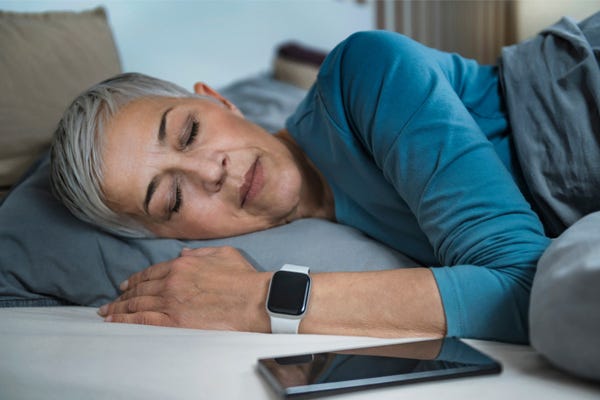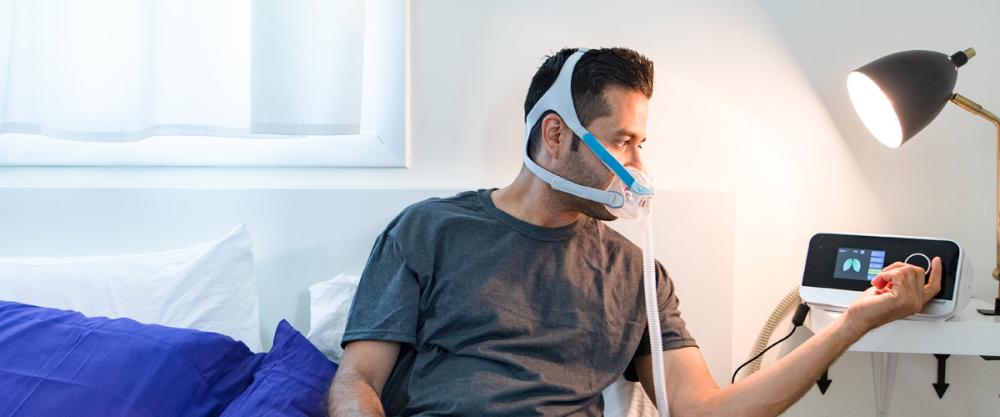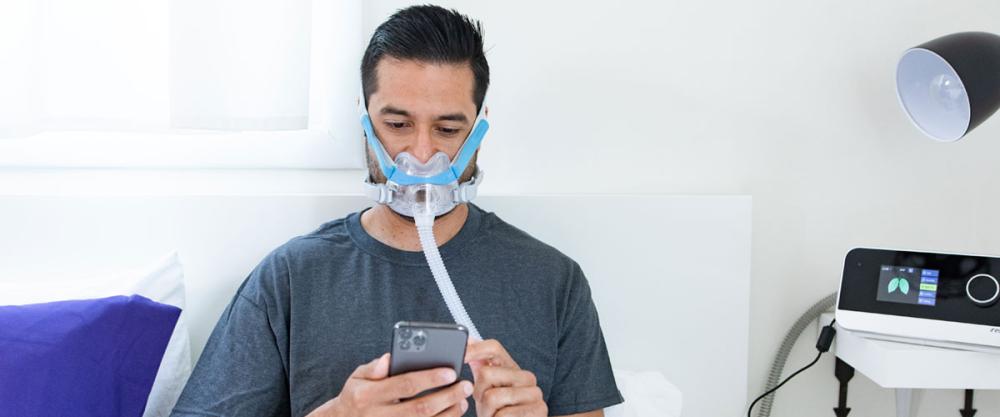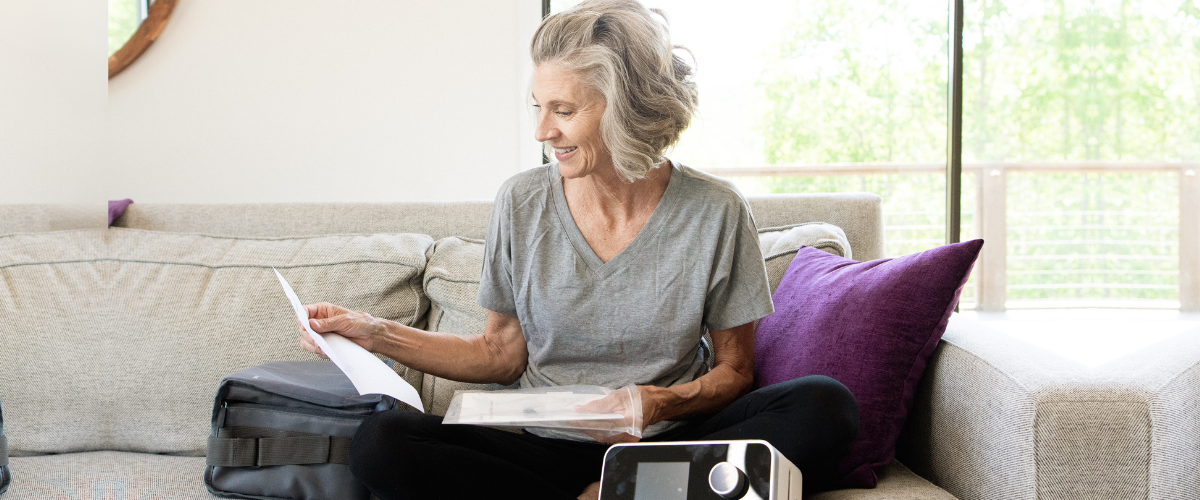If you’ve talked with your health care provider about sleep problems like snoring or excessive daytime sleepiness, you may have been referred for a polysomnogram, or an overnight sleep study. Curious about what to expect? We’ve gathered answers to some of the most frequently asked questions to put your mind at ease.
On the day of the test, you’ll arrive at the sleep clinic in the evening to get prepped (or early in the morning if you are a night shift worker who sleeps during the day). A trained sleep technologist will attach sensors to your body to monitor your sleep patterns. The sensors are painless, but your sleep technician will need to know if you are allergic to adhesive gels.
These sensors are connected to a computer via wires that are gathered out of the way so you can move around freely and settle into your preferred sleep position. You may also be fitted with a belt that goes around your midsection to help monitor your movement.
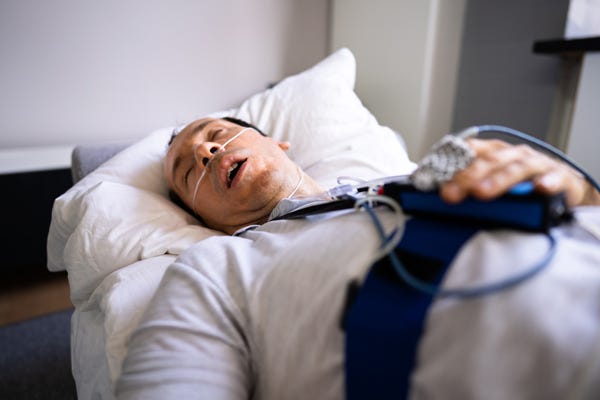

What Is a Polysomnogram?
A polysomnogram is the most widely used method to diagnose sleep disorders like obstructive sleep apnea (OSA). Other conditions that can be monitored through polysomnography include narcolepsy, restless leg syndrome (RLS), REM sleep behavior disorder, and others. It’s an overnight test that is conducted in a sleep laboratory or hospital sleep center. Here’s what to expect:
There may be a video camera and/or audio device that will allow the technician to see your movements during the night and to communicate with you to provide instruction or answer questions. It is quite common that you may not sleep as well at the sleep center as you would at home, but the sleep technicians will take this into account.
What Is Measured During a Sleep Study?
During the night, the sensors measure and record your brain waves, blood oxygen level, heart rate, and breathing patterns, chin muscle activity, eye movements, arm and leg movements, and other metrics.
Some sleep disorders like central sleep apnea (CSA) are best diagnosed in a sleep lab. Some insurance companies will not pay for an home sleep apnea test but will cover the cost of a test executed in a sleep lab. After you wake up, there may be a questionnaire to assess your sleep experience.
If it’s clear during the night that you could benefit from continuous positive airway pressure (CPAP) therapy, your sleep technician may go ahead and fit you with a mask hooked up to a cpap machine. This way you can get both the diagnostic test and CPAP titration study knocked out in one night.
What Should I Bring to the Sleep Lab?
Pack an overnight bag with essentials such as a toothbrush, toothpaste, comfortable clothes to sleep in, and a change of clothes for the morning. Bring a book if you typically read before bed. It’s important to try and stick as closely as possible to the bedtime routine you have at home.
You may also want to bring some personal belongings like a pillow and a blanket that will make you more comfortable. Ask you doctor if you can take all your prescribed medications as directed, or if there are any you should skip on the day of the test.
On the day of your sleep study, be sure to avoid coffee, chocolate, soft drinks, and anything else that contains caffeine after 12pm. Don’t drink any alcohol. It’s fine to shower, but refrain from wearing perfume, lotion, gels, or body oil. This will ensure the sensors will remain in place and deliver accurate results.
What Happens After My Sleep Study?
As you can imagine, the sensors transmit a massive amount of data to the computer. It may take anywhere from a few days to a couple weeks for your sleep medicine specialist to interpret the study results. Then they’ll be able to make an accurate diagnosis, recommend CPAP or BiPAP therapy, or suggest follow-up testing.
Can I Do a Sleep Study at Home?
A home sleep study is essentially a monitoring kit that you pick up from your doctor's office and take home with you. Typically it consists of a finger clip to measure your blood oxygen level, a tube with inserts for your nostrils similar to an oxygen mask, and a belt or device worn over your ribcage to monitor your inhales and exhales.
A home sleep study is most often used when a patient is suspected of having sleep apnea, and there is no need to test for more complex sleep disorders. Again, sleep disorders like CSA and others are best monitored and diagnosed with an in-lab study.
A home sleep apnea test is yet another option for people who suspect they may have sleep apnea. Unlike a home sleep study, a home test requires no equipment. With the advancement of cell phone technology and the development of wellness apps that can monitor health metrics, it's now possible to test for OSA at home with your smart device.
How Can I Get Started With Sleep Apnea Therapy?
If you are prescribed continuous positive airway pressure (CPAP) therapy, we can help get you the highest quality CPAP and BiPAP supplies at the lowest allowable cost. If you have questions about which CPAP machine will be best for you, don’t hesitate to give one of our Patient Care Representatives a call today at 866-298-6482. Remember, if you have issues falling asleep, staying asleep, or if you’re feeling more and more tired during the day, consult your health care provider.
References
Mayo Foundation for Medical Education and Research. (2023, February 17). Polysomnography (Sleep Study). Mayo Clinic. Retrieved February 23, 2023, from https://www.mayoclinic.org/tests-procedures/polysomnography/about/pac-20394877
What to know about an at-home sleep test. What to Know About an At-Home Sleep Test | Johns Hopkins Medicine. (2022, February 8). Retrieved February 26, 2023, from https://www.hopkinsmedicine.org/health/wellness-and-prevention/what-to-know-about-an-at-home-sleep-test


